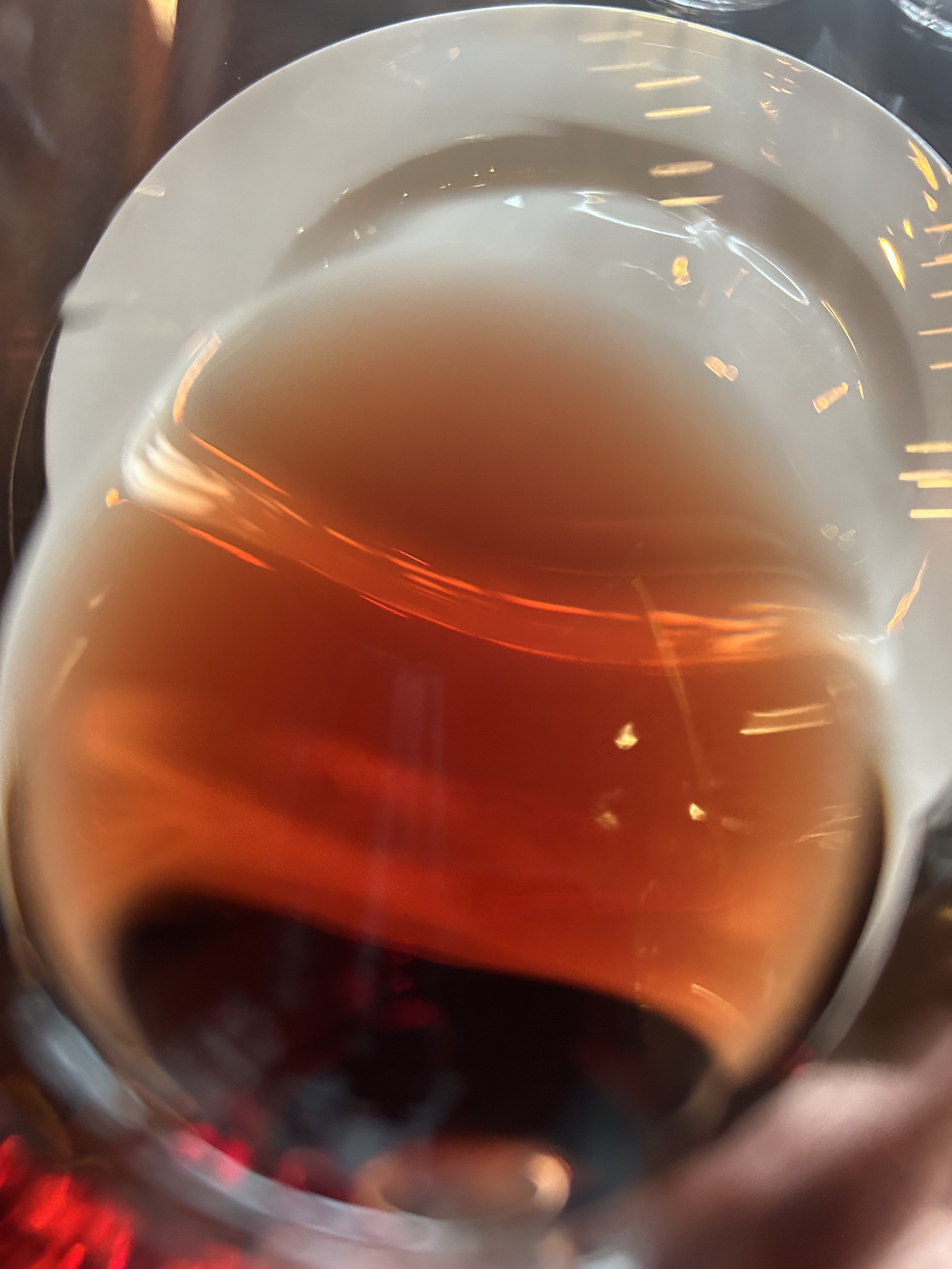A Fabulous Cache of Perfectly Stored Vintage Port (back to 1924)
When the late Michael Broadbent re-formed Christie’s wine department back in 1966, one of his more intriguing tasks was to visit the cellars of county houses up and down the kingdom to assess valuable old wines. It is fair to say a country house in a cool, damp climate with thick stone walls is the perfect place to store and age wines made in sunnier climes. He must have made some fascinating discoveries. I know for myself (on encountering a dozen Hermitage La Chapelle 1961 many years ago) how finding an old wine is like coming face -to- face with a friendly but shockingly thrilling ghost.
I thought that most of the wines from these old country house cellars must have been either sold or drunk by now. So imagine my delight when I was invited to visit Raby Castle in County Durham where a cache of rather wonderful vintage Port had been discovered. Raby Castle dates back to the 11th century with substantial parts of the surviving building dating from the 14th century and 18th and 19th centuries. (John Carr of York, who designed a number of buildings in Oporto, was responsible for the 18th century modifications).Built from local gritstone Raby Castle has a forbidding, fortified appearance with stone walls that are many feet thick in places. It is the home of Lord and Lady Barnard (Harry and Kate) who took over the property in 2016 and have a restoration project on their hands.
These Ports were laid down by the 10th Baron Barnard who, according to the cellar ledger, bought the wines as soon as they were (UK) bottled and cellared them. They have lain there ever since, possibly untouched since Christopher Barnard died in 1964. There are substantial quantities (I won’t at this stage reveal just how much) which will be sold at Christies in multiple lots from June this year.
I was privileged to be invited by the Directors of Christie’s and Lord and Lady Barnard to attend a lunch at Raby Castle on 25th April 2024, the 50th anniversary of the revolution in Portugal. Sporting my red Carnation, we tasted and then drank the wines raising a toast to Portuguese liberty with Dow 1924, a wine made two years before the events that brought the Salazar regime to power. Staring out over the countryside of Co. Durham on a day of cold April showers and dappled sunlight, I have to say it is one the most magnificent Ports that I have ever tasted.
The wines are listed in the order they were served. There was some bottle variation (to be expected with wines of this age) but it has to be emphasised the wines were in perfect condition and show the staying power of vintage Port if it is kept in the right place. And there can be no better place than the cellar of Raby Castle.
Cockburn’s 1950 ****/*****
This was not the most auspicious vintage but it was fully declared by a few houses including Cockburn who, under the direction of John Smithes, had a rather idiosyncratic approach to vintages. How right he was to declare and bottle this wine, still mid-deep in colour with a broad, browning rim; quite restrained on the nose initially with a bitter cherry fruit emerging; still relatively firm, all-together, with lovely linear (but not ‘lean’ as Michael Broadbent claims), even sinewy tannins all the way through to the finish. Not powerful but elegant with demure cherry stone fruit just hiding behind the dusty-gravelly tannins. I have tasted this wine on a number of occasions and this is in perfect condition, to drink now and with a long drinking plateau ahead. 18.5
Taylor 1948 *****
The post-war years were kind to Port (even if the markets weren’t) with fully declared vintages in 1945, 1947 and 1948. There is a fuller vintage report in my book, Port and the Douro, but suffice to say here that the summer months were hot producing ripe, opulent wines. Taylor’s is certainly in this mold, still deep for its age with striking immediacy on the nose: exotic, sub-tropical fruit akin to ripe pineapple. Similarly voluptuous on the palate with gloriously rich texture and mouthfeel mid-palate, the richness of the fruit still masks the underlying structural, spicy tannins that emerge on an opulent finish where both soft summer strawberries and pineapple freshness and tropicality leave their mark. Not my favourite wine in the line-up (I prefer a bit more restraint) but an outstanding and thrilling vintage Port. 19.5
Fonseca 1934 *****
The years 1934 and 1935 were a split vintage and there is a consensus that the latter year may just have the edge. However, having tasted Fonseca ‘34 on a number of occasions, it is undoubtedly the pick of the vintage and as good as the best from 1935. Bottled by Hatch Mansfield, there was some bottle variation here with wine from the first decanter seeming a bit dumb and dusty on the nose, with the second more effusive showing dark chocolate intensity on the nose with some flesh on the palate. Beautifully defined soft berry fruit supported by fine linear tannins and cherry stone freshness on the finish. Impressive and in perfect condition. 19
Dow 1927 *****
This was a monumental year for Port, declared by 30 shippers. When I first tasted a line-up of 1927s back in 1989, we had a discussion as to whether some of the wines were ready to drink (after 60 years in bottle!) I think that we can conclude that they are ready now but that you need to be in no hurry to drink. Bottled by Page & Sandeman, retaining a wonderful rosy colour, there was some bottle variation here (to be expected) with wine from one decanter seeming a bit Bovrilly on the nose. The second was more restrained with lovely creamy fruit on the palate backed by tight-knit, spicy-peppery tannins, still grippy and very fresh with that firm, dryish finish that is so characteristic of Dow. 19
Dow 1924 *****
Tasting this on the 50th anniversary of Portugal’s 25th April Revolution, I had to pinch myself when I realised that this wine is now 100 years old. I have tasted this on a number of occasions and it has always been impressive but this was perfection. From a late but successful harvest where yields were low, this wine (bottled by Page & Sandeman) retains beautiful colour and fragrance with lovely berry fruit (‘cranberries’ in the words of one fellow taster) and classic floral perfume. Pristine freshness on the palate with well-defined berry fruit, milk chocolate richness, grippy tannins mid-palate and a wonderfully complex finish. I picked up esteva (gum cistus) so evocative of the Douro as well as, unusually for Dow, a sense of sub-tropical richness and sweetness. Not the biggest or boldest of the wines here, but certainly the most complex and haunting, all in a very good and very remarkable way. 20
The remarkable colour of Dow 1924
The line up above was complemented by two wines brought by Charles Symington (representing Cockburn and Dow) and Adrian Bridge (Taylor and Fonseca). These were the so-called ‘mouthwash’ tawny wines that just happened to be 50 years old and perfect to drink on 25th April. I won’t award marks here as I didn’t make detailed notes.
Graham’s Single Harvest 1974 *****
I don’t know if it was due to the uncertainty of the revolution but 1974 was quite a good year that was not declared but some shippers kept back their wines to be bottled later as colheita (single harvest). This is now supper-suave and smooth initially but has retained a dusting of tannin which gives piquancy to the finish and balanced the natural richness. Very fine in context.
Taylor’s Golden Age 50 Year Old Tawny *****
A blended tawny in the new 50 year old category: beautifully soft, caramelised fruit on the palate, seamless, sweet and almost unctuous, fresh with a deliciously long, butter scotch finish retaining freshness and poise.
Wonderful spectrum of colours: from 50 year old tawny to 1924 vintage








